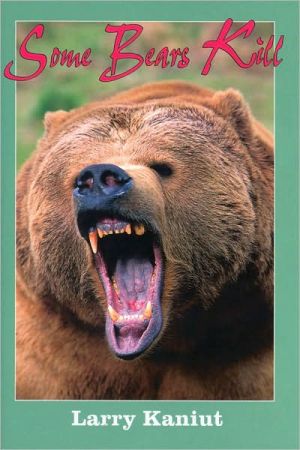

 |

|

The average rating for Some Bears Kill: True-Life Tales of Terror based on 2 reviews is 5 stars.
Review # 1 was written on 2008-06-25 00:00:00 John Gray John Gray14th book for 2019. A really wonderful meditation on life on the high grass prairie. Gruchow's writing is superb. He deftly balances minute observations of nature, while never forgetting the place (for better or worse) of people within the landscape. An excellent successor to Aldo Leopold's A Sand County Almanac and Sketches Here and There. 5-stars. |
Review # 2 was written on 2013-11-03 00:00:00 Jeffrey Frajman Jeffrey FrajmanAmong the long list of American nature writers, Paul Gruchow's Journal of Prairie Year stands out as one of the most celebrated books on the midlatitude grasslands of the Midwest. In his forward, Scott Russel Sanders rightly compares Gruchow to Thoreau and Leopold, two of the most renowned nature writers of the 19th and 20th century. Gruchow's writing style and depiction of the tall grass prairie is just as elaborate as that of Thoreau and Leopold, raising questions about of the prairie starting with what the magnifying glass reveals, before backing up and considering this all but non-existence ecosystem as a whole. As a scientist and writer, Gruchow offers a look into the mystifying beauty of the prairie and all the aesthetic value present, while illuminating the ecosystem services and importance of this complex biome. Gruchow begins by describing the tall grass prairie during winter in southern Minnesota, a time when all but the wind and snow are moving on the prairie; exactly the belief Gruchow contradicts in his opening pages. The attention of the reader is immediately captured by the depiction and life that flourishes in the prairie, above and below the ground. While the plants all wither away and the snow begins to accumulate, Gruchow observes the foxes and deer, the rabbits and coyotes, reminiscing on the bison that would have roughed the winter's here. The prairie is full of life, if those who are near enough take the time to observe. But Gruchow does more than simply reveal the details and depict the beauty in the tall grass prairie; he describes a troubled childhood, filled with the loneliness and the curiosity of farm life. The life of Gruchow is a fascinating roller coaster that adds to the challenges and misunderstandings of a huge part of his soul: the prairie. The Journal of a Prairie Year illuminates not only the beauty and magnificence of the tall grass prairie, but also the struggles and tragedies of the prairie. Gruchow's ability to personify the prairie with such emotion is a craft that few have been able to achieve. All of sudden Gruchow has captured more than a moment on a prairie, but a scene with much more personality, as if someone had stumbled upon Thoreau's cabin in the woods a century earlier to share a quiet and enjoyable moment with nature. The Journal of a Prairie turns, if only for a couple of pages, to portray a sense of togetherness with nature, that his journey in the prairie over his lifetime is more than a solitary one. Gruchow's prose and scientific work with the prairie don't end with the awe inspiring beauty of the pasqueflower, or the badger, or his examination of the breeding of garter snakes. Gruchow excellently ties the rest of his novel together by combining all the parts and looking at the prairie as a whole. He still continues to underline different species individually, but he shifts into talking about the ecosystem services that the prairie can offer humans, since Gruchow knows that not everybody loves the prairie like he does. Gruchow ropes in his practical and scientific readers by pointing out how the prairie functions as a whole. During the summer months of Prairie Year, there is a 37 day drought. Gruchow attributes this drought to the fact that most of the wetlands and rivers and streams that have once played a role in the prairie have been drained or diverted, and now the land doesn't hold the water as it has in the past. He attributes most of this destruction to drainage tiles and drainage ditches for farming. This brilliant analysis of the prairie ecosystem surely gives Gruchow the approval of his scientific community. The elaborate and poetic prose in which Gruchow uses in depicting the diversity and richness of the prairie in the Journal of a Prairie Year are the main reasons why the book is so well received and impossible to put down for those already in love with the prairie and those interesting learning more about the prairie. Its versatility and broad range of readers gives this book a rating of 4.5/5. |
CAN'T FIND WHAT YOU'RE LOOKING FOR? CLICK HERE!!!